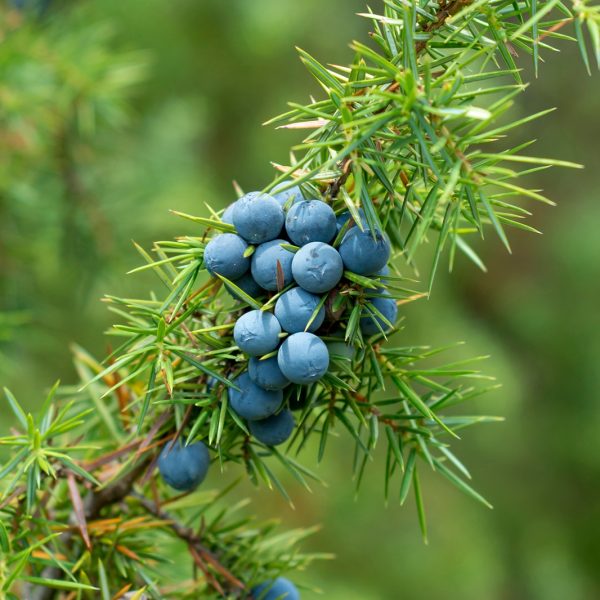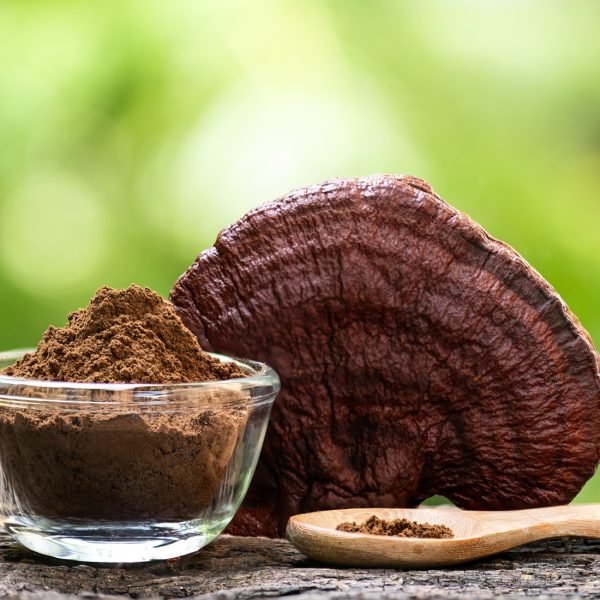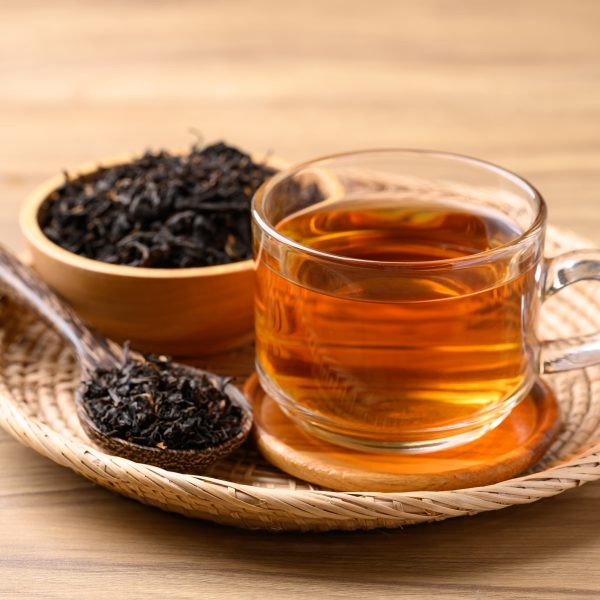This research seed summarises a systematic review exploring the influence of pine bark extract supplementation on measures of cardiometabolic health.

In this article, we summarise Does supplementation with pine bark extract improve cardiometabolic risk factors? A systematic review and meta-analysis (1).
Plant name and species
Pine bark (Pinus spp.)
This was a systematic review (SR) of the available research into pine bark. The search terms for the review included botanical names and commercial extracts: “French maritime pine bark extract” or “Pinus pinaster” or “Pycnogenol” or “Enzogenol” or “New Zealand Radiata pine bark extract” or “Flavangenol” or “Pinus massoniana bark extract” or “PMBE”.
Aim of study
The aim was to complete a systematic review (SR) of pine bark since studies have shown that it may improve cardiometabolic risk factors.
Study method
The study used SR methodology to search for and select randomised clinical trials (RCT) to review. The steps included:
- Defining keywords
- Searching multiple electronic bibliographic databases (e.g. PubMed, Medline, Scopus, Web of Science)
- Not excluding articles based on language or date
- Two authors identified studies that met the inclusion criteria and extracted data for the review
- Two authors assessed the study quality using the Cochrane risk of bias (RoB 2) tool
- Applying the Grading of Recommendations Assessment, Development, and Evaluation (GRADE) tool to classify the quality of evidence (very low, low, moderate or high)
The inclusion criteria for selecting studies were:
- Randomised controlled trial (with placebo or control group)
- Adult or child participants
- Study lasting at least two weeks
- Studies that measured cardiometabolic outcomes
The RCT data was examined using meta-analyses to numerically and visually display the data. Sub-group analysis further examined the data according to dose and length of trial.
Herbal preparation
The study focused on pine bark supplements, and the doses ranged from 25 mg to 1322 mg per day, and were given over a timescale ranging from two to 24 weeks.
Sample size
Twenty seven RCTs were selected for analysis which totalled 1685 participants. Participants had a wide range of conditions where cardiometabolic risk factors, such as blood pressure, blood glucose or lipids, anthropometric measures, had been assessed.
Results of study
In the 27 RCT, the mean age of participants was 10–74 years, with body mass index ranging from 18 to 34 kg/m². Most were a parallel design and three were cross-over. Participants conditions included metabolic syndrome, cardiovascular disease, diabetes, hypertension, polycystic ovary syndrome and coronavirus.

Body weight
Pooling the data from eight trials, pine bark significantly reduced body weight, and specifically, long-term supplementation (≥ 10 weeks) of 101–199 mg daily had a significant effect.
Other anthropometric outcomes
Pine bark supplement had no effect on body mass index, waist circumference or waist-hip ratio.
Blood pressure
Pooling the data from 20 RCTs, pine bark significantly decreased systolic and diastolic blood pressure. Breaking down the data further, for systolic pressure, either short or long-term supplementation of a daily dose of 101–199 mg was beneficial. For diastolic pressure, only long-term supplementation (≥ 10 weeks) at a range of doses ≤ 100 mg, 101–199 mg or ≥ 200 mg, was beneficial.
For this analysis, the authors reported high heterogeneity, which is a measure of variability across the studies, reflecting the breadth of participant characteristics, herbal preparations and doses, and study methodologies.
Glycaemic parameters
Pooling the data of 13 RCTs, pine bark significantly reduced fasting blood sugar levels compared to controls, with both short term and long term supplementation effective.
Serum insulin did not change following supplementation (three RCTs), but serum HbA1c decreased significantly in the pooled pine bark data (six RCTs).
In all of these tests, there were high levels of variability (heterogeneity) once more.
Lipid profiles
Total cholesterol levels did not change overall, but breaking down the data revealed a significant decrease in short-term supplementation (<10 weeks) (15 RCT).
Triglycerides levels did not change between groups overall (13 RCT).
High density lipoprotein did not change overall between groups, but breaking down the data revealed a significant decrease in short term supplementation (<10 weeks) and at a daily dose of ≤ 100 mg (17 RCT).
For low density lipoprotein, serum levels decreased in the pine bark groups compared to placebos, and decreased specifically following short-term supplementation (14 RCT).
Quality of studies and quality of evidence
The Risk of Bias analysis identified 16 studies with a low risk of bias from methods and study design, nine were high risk due to poor randomisation and missing data, and two further RCT also had missing outcome data.
The GRADE analysis of quality of evidence concluded high quality for body weight, moderate quality for body mass index, insulin and HbA1c. Other significant results were deemed low quality evidence and the high heterogeneity would have been a factor in this.
Discussion
This was a well-conducted SR that retrieved 27 RCTs that had tested the effects of pine bark supplementation compared to placebo on patients with cardiometabolic conditions.

Pine bark significantly improved body weight, blood pressure and several blood biochemical markers. The RCTs on the whole were high quality. The subgrouping of studies together to look at the doses and timings in more detail produced high levels of heterogeneity (or variability), which reflects diversity amidst participant characteristics, study design and the types of pine bark supplements used in the studies. This is normal between herbal studies, which can often investigate a variety of herbal products, preparation methods and doses.
The GRADE analysis is important as it reflects the size of the clinical effect and considers the level of importance to patients. The high and moderate GRADE results for body weight, body mass index, insulin and HbA1c are a significant result for pine bark.
Pine bark has a long history of traditional use for wound healing and anti-inflammatory effects, and for treating cough (2). One of the main active constituents in pine bark extracts is procyanidin, which is found alongside flavonoids, phenolic acids, resins and vitamins (2).
Many pine bark extracts are commercially available, and in this systematic review they searched for Pycnogenol from French maritime pine bark, which is standardised to levels of procyanidin, known for antioxidant and anti-inflammatory effects (3). Studies on other commercial extracts were included in the review.
One of the strengths of this study was the reasonably large volume of RCT included, which enabled the results to be pooled and analysed by sub-group. Therefore, pine bark was found to be effective both short and long term (either less than or greater than 10 weeks) and at a range of doses although 101–199 mg daily seemed to be the most effective. A limitation of the study was including such a diverse group of participants, and perhaps could have focused more narrowly on patients where cardiometabolic conditions were the primary diagnosis.
The details of the extracts from the 27 RCT was limited, and probably even missing from the original RCT manuscripts. Some of these were proprietary extracts but others would have been prepared in the researchers’ laboratories, and there were no mentions of the extraction methods or levels of active constituents within them.
Conclusion
There is a clear and strong picture emerging supporting the use of pine bark supplements for improving body weight, blood pressure and some blood biochemical markers in people with cardiometabolic risks. Further research should focus on more defined patient groups and should include full details of how the extracts are prepared and levels of active constituents. Research should also monitor interactions with any drugs, which these patients may have been taking. The present systematic review did not make any comment on adverse events.
References
- Mohammadi S, Fulop T, Khalil A, Ebrahimi S, Hasani M, Ziaei S, Farsi F, Mirtaheri E, Afsharianfar M, Heshmati J. Does supplementation with pine bark extract improve cardiometabolic risk factors? A systematic review and meta-analysis. BMC Complement Med Ther. 2025 Feb 22;25(1):71. https://doi.org/10.1186/s12906-025-04819-9
- Lee EL and Barnes J. Pine Bark. J Journal of Primary Health Care. 2023 15(2): 192–194. https://doi.org/10.1071/HC23064
- Weichmann F, Rohdewald P. Pycnogenol® French maritime pine bark extract in randomized, double-blind, placebo-controlled human clinical studies. Front Nutr. 2024 May 2;11:1389374. https://doi.org/10.3389/fnut.2024.1389374





























